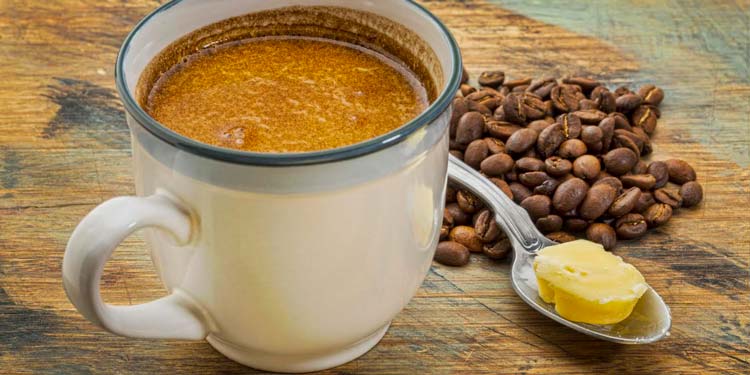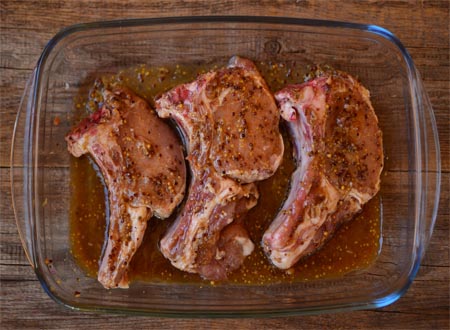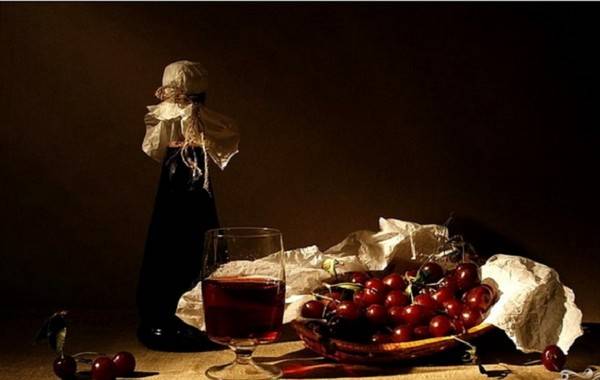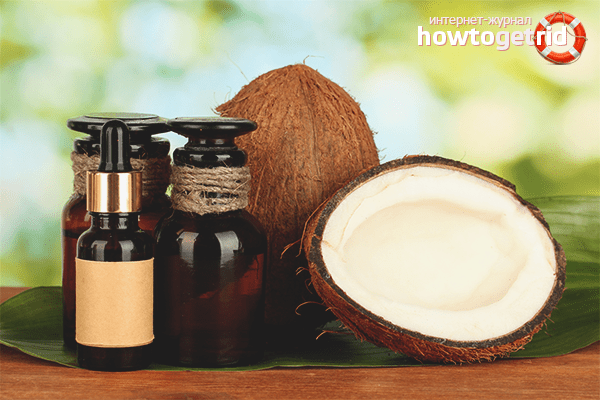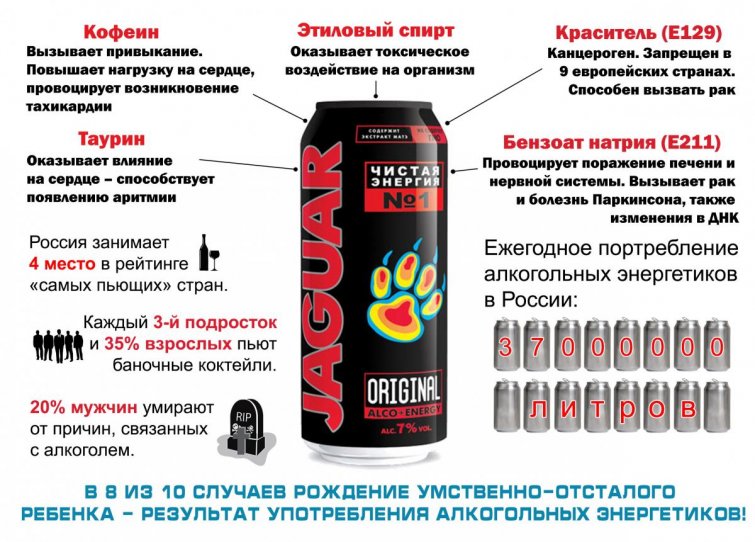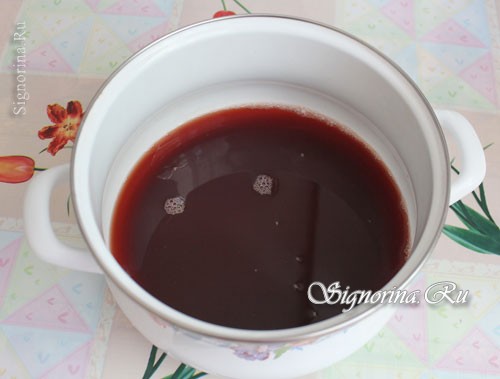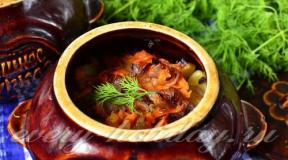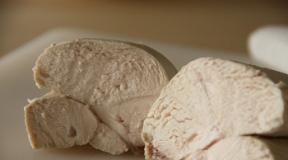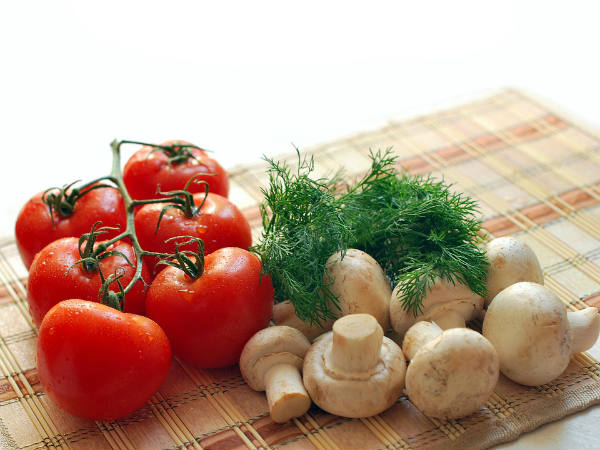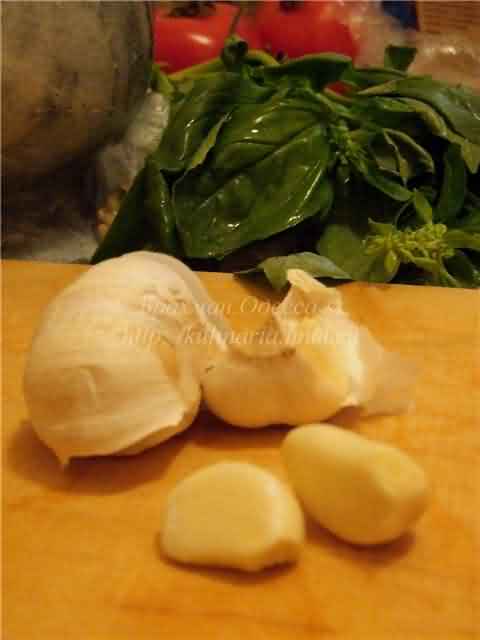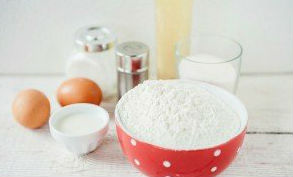Artificial food in China. How do Chinese people fake food?
China is famous for many things, including counterfeit goods. From clothes and bags to electronics — even entire cities — China has it all. But some "businessmen" went further and began to forge food.
At first glance, rice cannot be faked, but resourceful Chinese could do it. Fake Chinese rice is also called plastic rice. It is made from sweet potatoes and synthetic resin, it is very similar to real rice.
Artificial rice is usually sold in Chinese markets in the city of Taiyuan in Shaanxi province. This rice is poorly digested and remains hard as a stone, even after it is cooked. It can not be eaten. Eating three bowls of this rice is like eating a vinyl bag or plastic bag.
In addition to producing artificial rice, dishonest Chinese vendors add flavorings to ordinary rice and sell it under the guise of more expensive rice, “Wuchang Rice” - one of the best rice brands in Chinese markets. Only 800 thousand tons of Wuchang rice is produced annually, and 10 million tons are sold. In other words, 9 million tons of rice is fake.
When dishonest sellers do not fake rice, they add chemicals to the meat of rats, minks and foxes and sell it under the guise of lamb. The scheme was so popular and successful that the police arrested 900 people in just three months and seized 20 thousand tons of this meat. Wei, one of the sellers of such meat earned alone about 10 million yuan. He interfered with the meat of foxes, rats and minks with nitrates, gelatin and carmine, before selling it on the market to unsuspecting customers.
The Chinese police published on the largest website of microbiologists instructions on how to distinguish real mutton from fake. At first glance, it is difficult to notice the differences. The white and red portions of real lamb are not separated after the meat is thawed or cooked, and in fake meat it is separated.
Tofu is also called soy curd - a cheese made from a mixture of soy milk and coagulant.
Chinese authorities recently closed two factories in Wuhan City (Hebei Province) for selling fake tofu, which they received by mixing various chemicals.
One worker admitted that they mixed soy protein with flour, monosodium glutamate, dye, and ice, after which they were packed in such a way that it not only corresponded as closely as possible to the present, but also looked like the popular Qianye brand. So the plant solved the problem of sales from the very beginning.
Fake tofu was widely sold in Chinese markets. Since the fake was sold cheaply, it soon overshadowed the original brand. The company Deanfa Food Company noticed a drop in sales and sounded the alarm.
After the manufacturers of fakes caught, it turned out that they put on the packaging of the original laser code, using equipment worth 1.2 million dollars.
Using soy protein is not the meanest thing and not all schemes are so innocent.
Another criminal gang that produced fake tofu added rongalite to it and a cancer-causing industrial bleach. The chemical bleached tofu and made it tighter.
This gang led by three cousins sold 100 tons of poisoned product.
During a raid on their plant, the police found unsold goods and the dirty equipment on which they were made.
Duck blood tofu is a delicacy in China. It is made from the blood of slaughtered ducks. The blood is heated until it thickens, then it is cut into cubes and sold.
The Chinese authorities found someone forging duck blood, this time it was a couple in Jiangsu Province. Only in this case, the couple did not use the blood of pigs or cows. Instead, they used chicken blood mixed with inedible dye and materials used in the print shop. Police confiscated from them one ton of fake duck blood. The use of fake duck blood for tofu is so common in China that people have learned to recognize a fake from a natural product by its appearance and smell.
There are two types of counterfeit honey: it is diluted natural honey with sugar, beetroot or rice syrup and honey, which is more like natural honey than natural honey itself. It is made from a mixture of water, sugar, alum and dye.
Production of one kilogram of fake honey costs only 10 yuan at an implementation price of 60 yuan. Seventy percent of the honey sold in Jinan Province of China is fake. As usual, Chinese newspapers write about how to distinguish natural honey from counterfeit.
Police searched several underground producers and seized 38 buckets of honey. China is the world's largest exporter of honey. The study showed that 10% of honey sold to France is fake and most likely it was brought from Eastern Europe or China. The US Customs Service caught the smugglers who tried to smuggle fake honey into the US from China through Australia.
Selling fake honey is one thing, and selling dirty drinking water is another. Recently, police found scammers who filled plastic bottles with tap or poorly purified water and sealed them on equipment that popular brands use. They also glued their labels and quality marks on the bottles. Among other things, they found E. coli and a harmful fungus in bottles. Every year, 100 million counterfeit bottles of water worth $ 120 million are sold in China. For comparison, 200 million bottles (genuine and counterfeit) are produced annually in Beijing.
The bottled water scam is not new and has been going on since 2002. The cost of such water is three yuan, and sell it for ten yuan. Production of normal bottled water costs six yuan.
Counterfeit Chinese rice noodles were made from rotten, stale and moldy seeds that are commonly used as animal feed. It is then mixed with carcinogenic additives, such as sulfur dioxide, to obtain the final product. And this is not one person - 50 factories worked according to this scheme in the city of Dongguan. They produced 50 tons of counterfeit rice noodles per day. Inspection of the other 35 factories showed that 30 of them produced substandard rice noodles. Producers bleached spoiled rice and mixed it with additives to get a triple volume of rice noodles.
Along with the use of stale rice, some manufacturers use flour, starch and corn powder. Such noodles have a very low protein content - only 1% compared to 7% for pure rice noodles and 4.5% for mixed rice noodles. Some pigs fed fake rice noodles had weak limbs and other problems.
Clenbuterol or “lean meat powder” is an additive to animal feed. It burns fat in animals, but in humans can cause nausea, heart problems, sweating, and dizziness. Its use in animal feed began in the 1980s, and was banned in 2002 due to a health hazard. However, some meat processing companies still give it to their pigs, as this makes their pigs slimmer, and for such pigs they get more money.
Worse, they caught Henan Shuanghui, China's largest player in the meat market. The company issued a formal apology for this act and withdrew 2,000 tons of pork from the market. Twenty-four company employees were laid off or suspended.
In an attempt to minimize the losses of the company, it suspended the sale of shares so that the scandal would not affect their price. The Chinese Meat Association also tried to downplay the incident so as not to harm the Chinese meat market. Between 1998–2007, 18 cases of clenbuterol were recorded in China, one person died and 1,700 people were poisoned.
Counterfeit and counterfeit wines are a big problem in China. Central Chinese Television (CTV) reported that half of all wines sold in China are fake. According to winemakers, 90% of premium wines sold in China are fake. To counteract the sale of counterfeit wines, in Guangdong, they created a center for determining the authenticity of wines. The winemakers have teamed up with the government and released an application to track wine bottles and boxes in order to determine their authenticity.
The scam is simple: in the fake they used the original name, label and design of expensive wine bottles, but the logo and the name were slightly changed to differ from the original. Other swindlers used empty bottles of expensive wines, filling them with cheap wine.
Large hotels and auction houses destroy empty bottles so that they cannot be reused. During a raid on a group that was engaged in forging wine in China, the police found 40 thousand bottles of fake wine worth $ 32 million. The group was engaged in bottling cheap wine in bottles of expensive wine brands. In 2012, the police also uncovered 350 cases of wine forgery in Shanghai. The total amount of fakes was 1.6 million dollars.
Hairy crabs from Yangcheng Lake are the most expensive crabs in China, and it's no wonder people try ordinary crabs for more expensive ones. Real crabs come exclusively from Yangcheng Lake, but there are some tricky ways to get around this. Some vendors take water from Yangcheng Lake and soak ordinary crabs in it for several hours before selling them. Other vendors use chemicals to make crabs look like those from the lake.
Of the 300 hairy crabs sold, Yangcheng is only one natural. In total, 100 thousand tons of hairy crabs are sold annually, but only 3 thousand of them are natural. To fight the scammers, the Crab Business Association demanded that each hairy crab from Yangcheng Lake be worn with a plastic ring with a unique digital code. This plan soon fell through when licensed hairy crabs vendors Yangcheng sold to scammers who sell fake crabs digital codes.
Fake chicken eggs appeared on the markets a few years ago. They are very similar to the real ones and customers in appearance cannot distinguish them from the real egg. Fake eggs are two times cheaper than real ones.
Outwardly, the similarity of fake eggs with real ones does not end there - they have squirrels and yolks inside.
Fake eggs are made from gelatin, benzoic acid, alum, calcium chloride, paraffin and other substances.
On the Internet, there are still three-day courses for making such eggs; they sell these courses for 150-200 dollars. To taste fake eggs are a bit like real ones, especially if you fry scrambled eggs from them (Chinese cuisine uses quite a lot of spices, which you can disguise any taste). However, when frying, many bubbles will appear on the surface of the protein (which should alert the consumer).
Doctors warn: the use of such eggs causes serious violations in the gastrointestinal tract and, according to some scientists, with prolonged use provokes dementia (dementia).
Cardboard buns mixed with chemicals that give them pork flavor. The show CTV showed the seller who makes baozyi rolls of cardboard. First, the cardboard was mixed with caustic soda, which is used in the manufacture of soap and paper, and then mixed with seasoning and pork.
This viral video has been spread by several international media with incredible speed. The Chinese government later claimed that the foreign media had taken the news too seriously and that the fake buns were in fact a hoax. The reporter who shot this video was arrested. The government said that he shot this video to raise the channel's rating.
Chinese cuisine is one of the most diverse and popular in the world. Sushi, rolls, dishes using soybeans, rice and noodles are just a small part of what defines Chinese cuisine and what is enjoyed with pleasure in our country. In fact, food is of paramount importance in Chinese culture, and for a real Chinese, not only the taste of food is important, but also its appearance, as well as the correct presentation. We offer you to feel the Chinese food culture and take a look at the menu of one of the restaurants of the Hainan Island.
Breakfast
Yutyao with soy milk
Price - 2 yuan
Chunks of dough, fried in butter, the Chinese equivalent of churros. This dish originated from the historical figure, a great official Chin Hui. He was an envious and greedy man, received a big bribe and wove a conspiracy against the beloved people, General Yu Fei. All the Chinese hated the dastardly official, and once during a conversation with each other, two bakers in the heat of the moment and anger shredded pieces of dough and threw them into boiling butter, imagining that it was Chin Hui himself. It turned out so tasty that soon everyone began to "punish" the villain so.
Bao Luo Fen
Price - 10 yuan

Rice noodles are the basis of all the basics and most dishes on the island. Local housewives cook it with vegetables, chicken, seafood and what they come to mind (with indispensable sauces - some of them are very spicy) or throw in soup like noodles. A common feature of all dishes with rice noodles - do not count on the degree of readiness "al dente": bao low fen will be slightly boiled soft and juicy broth.
Yui Tang
Price - 50 yuan

Fish soup is the common name of a favorite Hainan dish. Any fish (or seafood) is cooked, and either shrimps, noodles, or vegetables and onions are added to the soup — in a word, what will be in the refrigerator and what does the cook’s fancy enough for.
Dong Gua Hi Luo Tan
Price - 30 yuan

Mussel broth with gourd pumpkin.
Dinner
Zytsai tribute to hua tang
Price - 30 yuan

Seaweed Soup Hainan people are distinguished by the fact that they must eat soup - for breakfast, lunch and dinner - and this habit explains their extraordinary longevity.
Baozzy and Jiaozi
Price - 30 yuan

Classic Chinese dumplings and dumplings. They can be with anything that the fantasy of the hostess is enough: with wild garlic, with shrimps and celery, with meat, with vegetables, with a sweet egg.
Wenchang Ji
Price - 20 yuan

Hen. One of the main Hainan dishes. The bird for this dish should be very fresh: it is dipped in boiling water for only three minutes - the meat is ready, but the blood from the carcass is still coming. Then she is carelessly chopped with a knife and served with her head and paws so that it can be seen that it was a fresh and whole chicken.
Jiaji i
Price - 40 yuan

Boiled or steamed duck, which before was transferred to an enhanced diet, like birds for foie gras. For jia ji, I rely on them to feed tofu and cereals - the meat from this is very tender.
He le se
Price - 60 yuan

Yellow crab meat melting in the mouth, tasty in itself, fragrant and slightly oily. Crabs are steamed and then served with garlic, ginger and vinegar sauce.
Xian Yu
Price - 40 yuan

Salty fish. There are two ways to make it. The first: in fact, rub it with salt before frying, but this is denied by supporters of a healthy diet. The second (and so many of the inhabitants of the island do) is to gut and cook fish for frying, and then dip it into the sea for a while so that it becomes salty. Fish and seafood are eaten almost as often as meat due to proximity to the ocean. For example, there are floating fish farms, where they grow (and then in floating restaurants and cook) all kinds of shrimp, crabs, octopus, mussels and scallops. Most often, such farms are headed by representatives of the Tribute Jia Min (dan jia yu min) nationality, who traditionally live on water and rarely descend to solid land.
Snacks
Yu zha hua sheng
Price - 10 yuan

An important feature of Hainanians is that they respect snacks between meals, and roasted peanuts - their favorite snack.
Zongzi
Price - 4 yuan

Rice with meat in bamboo leaves. In the north of Hainan they grow their own rice - very tasty - and also served as a side dish. Hainan is generally very proud of the fact that it is almost completely self-sufficient: here, thanks to the climate, almost everything grows. True, because of the heat, the livestock here is lean and very thin, so the local meat may seem harsh to someone.
Di gua e
Price - 15 yuan

Steamed with garlic and butter leaves of a young sweet potato.
Si Jiao Dou
Price - 20 yuan

Beans variety "four corners". It is served as a side dish - slightly toasted with soy sauce.
Soft drinks
Tea
Price - from 20 to 200 yuan

Tea ceremony for the inhabitants of the island - not an empty phrase. For them, a tea house is like a modern coffee house: a place where you can gather, discuss the news, slowly sit and drink tea. The most popular varieties here are oolong, kutin, pu-erh, “The emperor's concubine” (with ginseng) and “Alyushche east” (with tropical fruits). There is also tea made by hand - just like on the continent: flowers tied to a ball of tea. When you pour them with boiling water, you can watch for a long time in a transparent teapot as the flowers “bloom” and sway. But they don’t consider it as a real tea here - rather, it is recommended as a beautiful and affordable souvenir.
Coffee
Price - from 30 to 300 yuan

On the island, unlike in mainland China, coffee is loved and grown, for example, in the Xīnglóng Botanical Garden.
Cocoa
Price - 30 yuan

Cocoa beans are also grown here, which are then mixed with coconut milk and get very tasty cocoa - but this is also unusual for a typical Hainan, he will brew a thermos with tea better for himself.
Dessert
Tsy ba
Price - 8 yuan

Cakes of sticky rice, turned into elastic paste, wrapped in lightly stewed bamboo leaves, are steamed.
Qing bulyan
Price - 12 yuan

Popular sweetness that is eaten instead of ice cream. Fruits, beans, noodles - all in iced coconut milk. Local laugh: not every tourist can try this.
Alcohol
But mi jiu
Price - 30 yuan

Rice tincture. If the Chinese are drinking, then it is necessary to say: “Ganbey!” When you clink glasses (that is, “bottom up!”). And if someone does not dry the glass completely, they ask him: “Do you have live fish there ?!”
China is a country whose growth can give odds to any country in the world. Unfortunately, along with economic and industrial growth, the market of fakes is developing at an alarming rate in China. Previously, the Chinese faked appliances, clothing and all sorts of trinkets, now they fake food on a large scale. Perhaps this is due to the lack of food, the amount of which is not enough for an endless number of voracious Chinese, but most likely this is done for unprincipled profit. We can only rejoice that this trend has not yet reached us.
Fake rice noodles
In 2010, Chinese authorities discovered a huge amount of rice noodles made from rotten grains and potentially poisonous additives. In particular, 50 enterprises in the south of China near the city of Dongguan, produced spoiled noodles. According to the authorities, during the operation of these underground factories, they produced about 500 tons of noodles, which they made every day before they were closed.
Melamine milk

In 2009, 53,000 Chinese babies were vomiting milk with melamine. Melamine is very harmful to humans, and is similar in composition to cyanide. Four babies eventually died due to poisoned milk. It is believed that melamine was added in an attempt to increase the protein content in milk.
Glow in the dark pork

In 2011, a woman bought half a kilo of pork for dinner. She forgot to remove the remnants of cooked meat in the refrigerator, and when she woke up at night to drink some water, she noticed that the pork she left on the table glows with blue light. An analysis of the meat showed that the pork was contaminated by phosphorescent bacteria.
Fake chicken eggs

Using a mixture of industrial ingredients, some food companies in China produced fake eggs. The fake eggs were made from gelatin, water, and food coloring, and the shell was made from wax.
Walnuts with cement

This is one of the loudest food scandals in China. In search of easy money, the fraudsters gathered walnut shells, and filled its insides with concrete and paper, after which they glued the halves of the shell with regular glue. This sounds like insanity, but for thieves it paid off handsomely, because the price of real walnuts in China is quite high, and over the years the demand for them has only increased.
Rat meat

Over the past few years, more than 900 people in China have been arrested for trying to give out rat meat for any other. Mostly rat meat is sold as beef and is produced in extremely unsanitary conditions. According to police, fraudsters use prohibited chemicals to process meat and inject water into it to increase weight. By the way, the same preparation scheme for sale is relevant for traditional meat producers.
Fake rice

In 2011, Chinese media began reporting new food scandals taking place in the Chinese city of Taiyuan, Shanxi Province. According to their data, the fraudsters of this city produced fake rice from potatoes and plasticine, and then sold it to local residents. A spokesperson for the Chinese Restaurant Association confirmed this data and said that they are still looking for scammers who produced fake rice.
Fake wine

Dumplings with cardboard

In 2007, a Chinese newspaper published an article about Beijing street vendors stuffing jiaozi (Chinese dumplings) with cardboard instead of meat. Manufacturers soaked cardboard in chemicals to soften it, mixed it with pork fat, and then wrapped the resulting stuffing into dough.
A resident of the village of October bought a dozen eggs in Kungur. It turned out, trying to save money, he bought a fake chicken egg, made of chemicals. “Such surrogate products are prohibited for sale. But the fake eggs, flooding Siberia, successfully reached our edges, the newspaper “Forward” reports. - The secret is simple: their production is very cheap, and the shelf life is almost unlimited. A fake egg costs less than 0.1 yuan ($ 0.016), while a real egg will cost about 0.5 yuan. ”
Fake chicken eggs look very similar to the original ones. The nutritional value of fake eggs is almost zero, besides, they contain substances that can cause damage to health (for example, potassium alum) with prolonged use.
Chemical composition: The shell consists of a mixture of calcium carbonate, paraffin and gypsum. Calcium alginate, gelatin, pigments are used for yolk and protein.
Although outwardly it is almost impossible to distinguish such eggs, there are a number of ways to recognize them.

The shell is a bit more shiny and rough. But the differences are quite insignificant, therefore, it is not easy to determine an artificial egg by its appearance. For the rest, there are practically no differences, there is even an air membrane in its lower part.

If the yolk is broken, then in appearance it is indistinguishable from the present.

If a hard-boiled egg is boiled, then cleaned and put in a refrigerator for 4-8 hours, then the yolk does not turn blue, as is observed with a real egg, becomes elastic, but does not crumble, and the protein becomes yellowish. The structure of the "protein" is heterogeneous, the protein can fall apart.

After some time, the protein and yolk of a broken artificial egg form a homogeneous mass, since they are made of the same material.


Doctors say that long-term consumption of such eggs can lead to the excitation of the nervous system, excessive mobility in children and slowing their mental development.
Once in China and sticking their noses out of the hotel, the tourists initially are in a state of shock. Surprise is all - architecture, people, characters on signs. Street food is especially striking: it looks like a sausage, and it tastes like rice. It seems to be a sweet cake, but with bacon. The Chinese have a peculiar attitude to food. For example, they consider tomatoes and red beans as fruit and gladly add them to the cake. Therefore, it is better to get acquainted with the features of street food in advance. Read our article on unusual street food in China to get more impressions from a wonderful country!
For a snack - duck and snake heads, cockroaches, larvae
Tourist streets of Chinese resorts are full of trays with pickled kebabs from cockroaches, grasshoppers, locust and other evil spirits. Curious, yes. But tasteless, nasty and quite dangerous.
Do not eat dried reptiles on the streets. This is not a traditional food for the Chinese, but a classic lure for tourists.
In "normal" Chinese institutions also serve shocking dishes - duck, snake heads, fried little birds and pickled embryos. They invitingly lie on the distribution of buffets and do not terrify anyone. Europeans such dishes are not something that is not tasty, rather incomprehensible. Trying fried sparrows or chicks crucified on skewers - you decide.

Did not like? Try centenary eggs!
Of course, these black eggs with an amazing flavor are not 100 years old, but only a few months old. The Chinese soak chicken, duck, quail eggs in alkaline solution, then wrapped in polyethylene and left alone for several months. When the eggs properly spoil and become beautiful black, they are served to the table.

On the hot - soup with giblets, bull penis and pig uterus
The Chinese have their own understanding of the meat dish, from which it is easy to become a vegetarian. They eat not only fillets, ribs, spatula, but also the inside of the animal. If you ordered soup, it can be with a heart, stomach, lungs. Fried chicken offal or paws are classics of Chinese cuisine. They are marinated in soy sauce, then dipped in frying or grilling, and then served in street cafes.

In the barbecue bars of China you can unknowingly order the pig's uterus. And then guess what kind of meat it is and why it is not chewed. Bull penis is another classic of the genre. We have not tried, but tourists admit that the meat is not bad - porous and soft.

Did you miss the human food? Try traditional tortillas and ravioli!
If you see a cook preparing round white tortillas on the street, take it without hesitation. These are quite familiar to us patties with onions, very tasty and juicy. Just make sure the merchant makes you as much food as you need. Often they call the price for one unit, prepare two at once, and then pay you. Be alert!

When you have lost your homesickness, you can eat Chinese fried ravioli. Unlike the Russian dish, seafood, fish, spinach, and meat are added to the inside. The dough is made from rice flour. The dumplings are tasty, juicy, but often spicy. In general, eat without fear - do not put any cockroaches inside!

Pea ice cream for dessert!
Strawberry, vanilla, ice cream and chocolate are all so boring! In China, you need to try what you will not find in the native Pyaterochka. For example, ice cream with a taste of peas. You will recognize it by the picture of green peas on the package. They say that dessert has a rather funny taste, which is not at all like a Russian salad.

What about corn flavored sweets?
If you can't live without chocolate, take the “Alenka” with you. There are no normal tiles and sweets in China. There are a lot of sweets here - candied fruits and flowers, fresh exotic fruits, but the usual for us chocolate "bears" and "squirrels" are not to be found. Chinese "chocolate" consists of soy, sugar and who knows what thickeners and preservatives. There are no problems with caramels and sweets - go to any supermarket and type a couple of sweets at random. With such purchases you can arrange an attraction, as in "Harry Potter". Someone gets a candy with sesame, someone with a pineapple, and the lucky man gets fudge with corn filling.

Drink all the teapot!
If every time you find it difficult to decide in a restaurant, what do you want more - tea or coffee, then there will be no such problems in Taiwan. Here, the locals are very fond of a special drink Yuanyang. It consists of 2/3 milk oolong and 1/3 of freshly brewed espresso. The drink is universal - in the winter they drink it hot, in the summer it is served with ice cubes.

The conclusion is simple: with a gentle stomach in China is better not to try anything! If you are afraid, limit yourself to grilled chicken, noodles and desserts.
